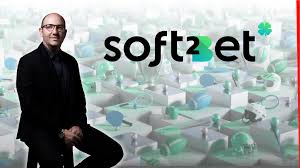
The Player Growth Engine: A Blueprint for Success
In today’s competitive gaming landscape, developing a robust player growth engine Soft2Bet player growth engine is essential for studios aiming to retain players and maximize engagement. Understanding the dynamics of player growth involves a deep dive into what motivates players to join, stay, and invest in games. This article will outline key components of a player growth engine, strategies to enhance it, and the importance of continuous evolution to keep pace with changing player expectations.
The Concept of a Player Growth Engine
A player growth engine refers to the strategies and systems put in place to attract, engage, retain, and convert players. It incorporates various aspects of game design, marketing, user experience, and community engagement. The ultimate goal is to create a self-sustaining system that continuously draws in new players while keeping existing ones invested.
Key Components of the Player Growth Engine
Understanding the key components allows developers and marketers to fine-tune their strategies for player growth effectively. Here are the critical elements:
1. Onboarding Experience
The onboarding experience is crucial for player retention. A well-designed introduction to the game can significantly reduce early churn rates. This includes tutorials, guided missions, and a user-friendly interface that helps players acclimate to the game’s mechanics. Successful onboarding should create a sense of achievement and investment right from the start.
2. Player Engagement Mechanics
Engagement mechanics are the various strategies used to keep players invested in the game. This includes rewards systems, daily challenges, and seasonal events that offer players incentives to return regularly. Implementing game loops that balance challenge and reward is key to keeping players engaged.
3. Social Dynamics
Incorporating social features such as multiplayer modes, chat functionality, and community events can greatly enhance player growth. Players are naturally inclined to engage with others, and fostering a sense of community can lead to increased retention and organic growth through word-of-mouth referrals.
4. Personalization
Personalization plays a pivotal role in player satisfaction. By leveraging data analytics, developers can gain insights into player behaviors and preferences, tailoring the gaming experience to individual players. This could involve recommending in-game purchases or customized challenges that align with the player’s interests and playstyle.
5. Feedback and Iteration
Regularly seeking player feedback and iterating on game features based on that feedback is essential for maintaining a healthy growth engine. Utilizing surveys, player forums, and social media engagement can yield valuable insights into what players like and dislike, informing future updates.
Strategies for Enhancing the Player Growth Engine

Now that we have identified the key components, let’s explore some strategies for enhancing the effectiveness of a player growth engine.
1. Data-Driven Decision Making
Utilizing analytics tools can help in tracking player behavior and understanding engagement patterns. Tracking metrics such as Daily Active Users (DAU), Retention Rate, and Average Revenue Per User (ARPU) allow developers to make informed decisions that directly impact player growth.
2. A/B Testing
A/B testing different game features, onboarding processes, or marketing strategies can provide insights into what resonates best with players. This experimental approach enables developers to refine their growth strategies based on empirical evidence rather than assumptions.
3. Community Building
Invest in community management initiatives by nurturing a presence on social media platforms, gaming forums, and hosting live events. Building a community not only fosters loyalty but also encourages player-generated content and organic promotion of the game.
4. Strategic Partnerships
Collaborating with influencers or other gaming brands can expand the audience reach significantly. Strategic partnerships can include cross-promotions, where games promote each other to their respective player bases, tapping into new markets effortlessly.
5. Regular Content Updates
One of the most effective ways to sustain player interest is through regular content updates. Whether it’s new game modes, seasonal events, or fresh narrative content, keeping the game dynamic and evolving can keep players engaged long-term.
The Importance of Continuous Evolution
The gaming industry is ever-evolving, and what works today may not guarantee success tomorrow. Continuous monitoring of player engagement and industry trends is vital to ensure the growth engine remains relevant. Adapting to technological advancements, player preferences, and market shifts is essential in maintaining a competitive edge.
Conclusion
Building a successful player growth engine is a multifaceted undertaking that requires a careful blend of creativity, data analysis, and community engagement. By focusing on the key components, implementing effective strategies, and remaining adaptable, game developers can enhance player growth and ensure the longevity of their titles in an increasingly competitive landscape.
Remember that your player growth engine is not just a static system but a dynamic entity that evolves with your gaming ecosystem and player expectations. Investing time and resources in understanding and optimizing this engine can lead to sustained success and player loyalty.

Commentaires récents